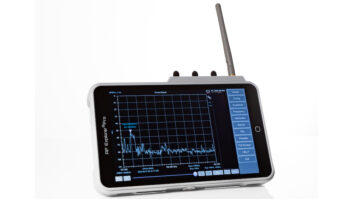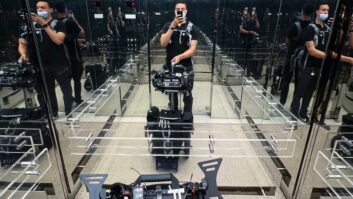New York, NY (October 20, 2017)—The successful completion of the FCC’s Incentive Auction earlier this year set the countdown clock ticking for wireless mic operators, who must vacate the 600 MHz band by July, 2020. But as a panel of RF experts on opening day of the convention stressed, some wireless equipment users will be losing access in their regions much earlier.
“I don’t want to sugarcoat it; it will be painful,” said Joe Ciaudelli, Sennheiser USA’s head of spectrum affairs. He was joined on the panel by Shure’s Mark Brunner, Jackie Green of Audio-Technica spin-off Alteros and moderator Karl Winkler of Lectrosonics, all key members of the group that has been raising awareness of the wireless audio business with the government over recent years. “We’re your real representatives in Washington,” said Winkler.
The overriding message was that wireless operators should get their Part 74 licenses. The process is not easy, panelists cautioned, directing applicants to contact a handful of experts who can guide them through the procedure for a nominal fee.
T-Mobile, which acquired the largest chunk of the 600 MHz band, has been aggressively rolling out its new services and intends to have over one million square miles covered by year’s end. It recently added 26 more counties to its plan, Brunner reported.
T-Mobile has also been sending letters to Part 74 license holders, warning them that the carrier will be firing up new services beginning November 1. On October 10, T-Mobile announced a partnership with FOX television stations to accelerate the network’s repacking schedule. One example, New Jersey-based WWOR-TV, which serves New York City, will clear the 600 MHz spectrum more than a year earlier than the FCC’s plan.
It’s not all bad news, Ciaudelli noted: “We did gain access to some alternate bands” from the FCC, and manufacturers are responding with new products. For example, Shure and Sennheiser offer equipment in the 1.9 GHz or DECT band, and Neutrik recently launched its point-to-point Xirium Pro system, operating at 5 GHz. Equipment meeting the FCC’s criteria for operation in the 1.4 GHz band will arrive in three to five years, Brunner predicted. Part 74 license requirements have also been changed to make it easier to operate in VHF.
Going forward, said Winkler, band planning—allocating certain frequency bands for different types of gear—and coordination with other users will be essential. Use just enough power to get the job done, he said, and select equipment that is spectrally efficient with wide bandwidth and good filtering.
“Be aware of the transition,” advised Brunner. Plan ahead, be prepared to retire non-compliant gear and update your inventories. The major manufacturers are offering trade-in programs during the transition.
“Scan early and often,” said Brunner. “You need to be aware of your environment.” Above all, he said, operate responsibly.







